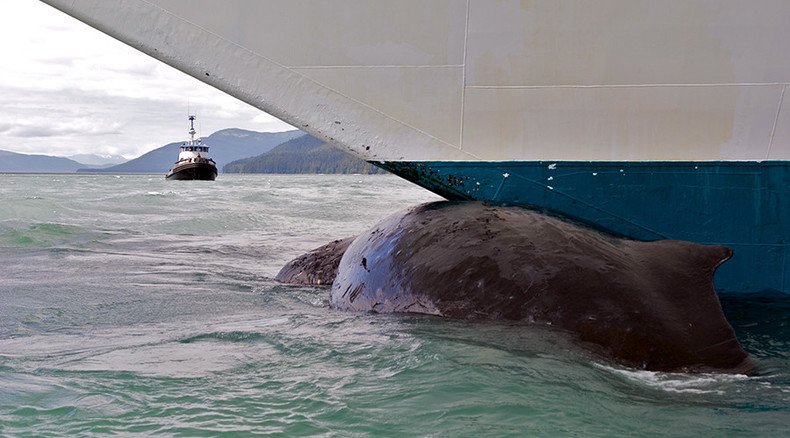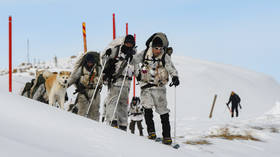‘Unusual mortality event’: 30 dead whales off Alaska prompts NOAA probe

The mysterious death of at least 30 whales off the coast of Alaska over the past three months has forced the US federal authorities to declare an “unusual mortality event,” enabling them to launch a probe, which scientists warn may take months or even years to conclude.
The National Oceanic and Atmospheric Administration (NOAA) said that 30 whales have perished in the Western Gulf of Alaska since May, making the authorities declare a special state of emergency, called the Unusual Mortality Event (UME).
What's killing Alaska's whales? http://t.co/ePAibXagtGpic.twitter.com/yZfa2Htxg2
— CBC British Columbia (@cbcnewsbc) August 20, 2015UME involves a “significant die-off of any marine mammal population,” that calls for an immediate response.
Over the course of last three months four types of whales have been affected. So far 11 fin, 14 humpback, one gray and four “unidentified cetaceans” have died.
Four humpback whales found dead in a week off B.C. coast http://t.co/q3gY6AAXp9pic.twitter.com/kepdMtVHTu
— HuffPost Canada (@HuffPostCanada) August 14, 2015“While we do not yet know the cause of these strandings, our investigations will give us important information on the health of whales and the ecosystems where they live,” said Teri Rowles, coordinator of NOAA Fisheries's Marine Mammal Health and Stranding Response program.
Besides the US territorial waters off Alaska, at least six whales have died along the shoreline of neighboring British Columbia, Canada, with NOAA seeking more data from the Canadian government.
#Whales found #dead in #Alaska - http://t.co/bbxA3lck2vpic.twitter.com/GFZRFTYcZm
— Clapway (@Clapway) July 28, 2015The first death in US waters of a fin whale was recorded on May 23, 2015 in Marmot Bay on Kodiak Island, Alaska. Since then carcasses surfaced in Afognak Island, Chirikof Island, the Semidi Islands, and along the southern shoreline of the Alaska Peninsula.
Only one whale carcass has had samples taken so far, with the rest of the dead whales having been left floating showing “moderate to severe decomposition.”According to NOAA, Canada already conducted a necropsy on two whales it found and is waiting for the results to come back to the lab.
"21 #humpback & fin #whales have been found #dead in southeast #Alaska during the past month " http://t.co/jHL5m1e9Utpic.twitter.com/8X3iw1B9Md
— Waterboxer (@Waterboxer) August 14, 2015As part of the UME investigation process, a team of scientists is now being assembled to sample and review the future gathered data. NOAA warns that the probe might take months, or even years of data collection and analysis. The scientists will be on the look out for biotoxins, bacterial and viral agents found in the dead mammals.
So far, scientists have ruled out a Fukushima connection, saying “it is highly unlikely,” that the dead whale sampled by the Americans was exposed to cesium 134/137 radioactive agents.
Mysterious Whale Deaths In Alaska Baffle Scientists http://t.co/iUEpOkJlgU@HuffPostGreenpic.twitter.com/FxgUbdXlcY via @omgirlsvt
— MBARI (@MBARI_News) June 21, 2015“Preliminary results do not suggest any unusual exposure to human-generated radionuclides, specifically cesium, that would be considered harmful to wildlife,” NOAA said.
Toxic algal blooms which produce domoic acid and which are then digested by the mammals could be the potential cause for their mysterious deaths, some scientists believe.
“So, if whales and other marine mammals are getting a huge slug of toxin in their food, either through filter feeding or through eating these fish (sardines and anchovies), they're going to have problems,” NOAA Northwest Fisheries Science Center oceanographer Vera Trainer told King5 news.
According to the latest NOAA Fisheries Stock Assessment Report, a minimum of 20,125 individual whales roam the north Pacific.













